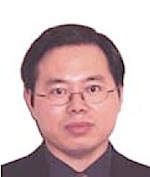Solid-State and Nano Seminar
Semiconductor Nanowires for Artificial Retina and Renewable applications

Semiconductor nanowire is a very useful platform for nanoscience and engineering research. The capability of rational synthesis and band engineering allow control over the electrical, optical, and mechanical properties at nanoscale, and thus enable enormous opportunities in electronics, optoelectronics, renewable energy, biosensing, and nanomedicine. In this talk, I will first present the ultrahigh sensitive nanowire photodetectors and the use of nanoengineered artificial photoreceptors for prosthetic device applications with sensitivity beyond human eyes. Then I will discuss results of nanowire photovoltaic devices (solar cells and photoelectrochemical cells) with significant potential for enhanced device performance and energy conversion efficiency at reduced fabrication cost.
Deli Wang received his B.S. degree from the University of Science and Technology of China in Polymer Chemistry in 1990. From 1990 to 1996, Deli worked on organic nonlinear optical and electro-optic (EO) polymers at Changchun Institute of Applied Chemistry, Chinese Academy of Sciences. Deli Wang earned his Ph.D. in 2001 in the Materials Department of University of California at Santa Barbara with dissertation on the fabrication of novel biosensors using organic light emitting polymers. He then worked as a postdoctoral researcher at Harvard University on semiconductor nanowires based nanoelectronics and nanooptoelectronics. Deli joined University of California – San Diego in 2004 and now is an associate professor in the department of electrical and computer engineering. His research interests are on nanoscale materials, devices and systems for renewable energy, sensing and human-machine interfacing applications. Deli has pioneered in conjugate polymer biosensors, nanowrie heterostructures, nanowire photodetector, nanowire solar cells and photoelectrochemical cells; he has published 57 journal articles (with a total citation > 6,400 times) and holds 10 issued or pending patents.
 MENU
MENU 
